The Kamakura Daibutsu is no doubt the greatest symbol of Kamakura City in Kanagawa Prefecture. The principal image of Kotoku-In, it brings countless visitors not just to the temple but to the Kamakura area. Surrounded by nature, one of the largest Buddha statues in Japan is a sight to see.
Table of Contents
- Introduction to Kamakura’s Great Buddha
- Visiting the Kamakura Great Buddha
- Exploring the Rest of Kotoku-In
- Etiquette, Opening Hours, Fees
- Summary
Introduction to Kamakura’s Great Buddha
The Kamakura period is a historically significant period of Japan’s history. It was during this era that the Shogunate system was founded, the samurai warrior caste system was established, and Kamakura became the government center. It was also during this time that Buddhism really took off in Japan, and with it the construction of the Kamakura Great Buddha.
Kamakura’s Great Buddha, a designated National Treasure of Japan, can be found at Kotoku-In 高徳院. According to the chronicles of Azumakagami, it was during the mid 13th century when construction of the great statue began. At that time, it was located indoors within a Great Buddha Hall. An onslaught of natural disasters destroyed the hall, leaving the Great Buddha exposed to the outdoor elements. The Buddha did not survive unscathed and was quite damaged.
With the combined efforts of Jodo Sect Buddhist monks and a merchant, the Great Buddha statue was restored. Seated in a lotus position, it welcomes visitors whether Buddhists who come to pray or tourists to gaze at it in awe, and overlooks Kotoku-In and the Kamakura area.
For more about the Kamakura Period, check out this article:
A Look Into the Past: The Kamakura Period
※ Kotoku-in, "The Great Buddha and the Teachings of Kotoku-in" ※ Kanagawa Travel Info, "Kotoku-in / Great Buddha of Kamakura"
Writer's Pick
Visiting the Kamakura Great Buddha
Now that you know its history, it’s time to visit the actual statue itself:
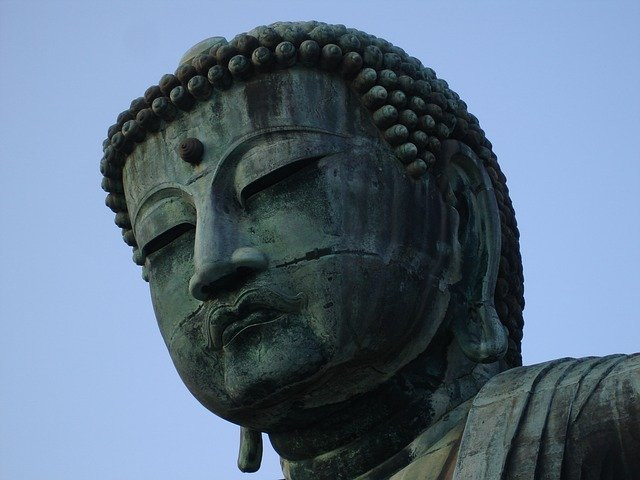
Although the original sculptor of the statue is unknown, the Great Buddha’s design and detail can be traced back to the style of Kei-ha, a Japanese school that specializes in Buddhist sculptures. At a height of 13.35 meters tall and weighing more than 100 tons, the sight of this gigantic Buddha statue is hard to miss. Although that is a considerable height, it still loses to Nara Daibutsu which stands (or rather, sits) at 18.03 meters tall. Of further note is that the Buddha statue is cast from bronze using a 12-step molding process followed by casting.
A unique experience is entering the statue to check out the inside. It costs 20 yen. Do note that since the statue is made from bronze, it can get quite hot inside during summers.
Note: As part of the measures to prevent spread of Coronavirus, entering the statue is prohibited until further notice.
※ Kotoku-in, "An Overview of the Great Buddha" ※ Kanagawa Travel Info, "Kotoku-in / Great Buddha of Kamakura"
Exploring the Rest of Kotoku-In
Aside from the astounding Great Buddha, there are other things to see in Kotoku-In:
Warazori Straw Sandals
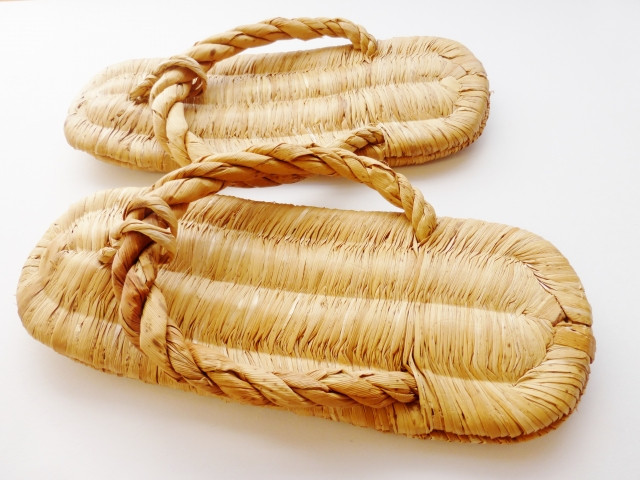
A gigantic pair of Warazori 藁草履, traditional Japanese straw sandals, are said to belong to the Kamakura Buddha himself. These huge slippers are 1.8 meters long each. There is a belief that whilst wearing these, the Buddha would walk around the streets of Japan spreading happiness everywhere he passed by. The temple’s tradition is to weave a new pair every 3 years. This has been going on since the first pair were donated to the temple in 1951. Till this day, the straw sandals are weaved by those from the club that made the first pair! How touching!
※ Kotoku-in, "Map of the Temple Grounds" ※ Kanagawa Travel Info, "Kotoku-in / Great Buddha of Kamakura"
Kangetsu-do
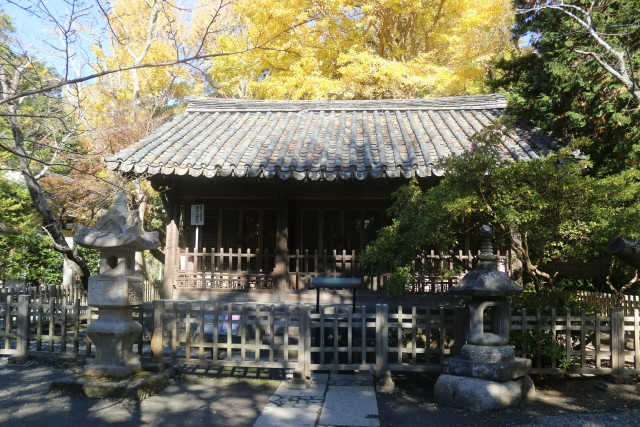
Just behind the Kamakura Buddha is Kangetsu-do 観月堂 or moon-viewing hall. Inside the hall is a standing image of Kannon Bossatsu that dates back to the Edo period. It is said that this hall used to be part of the Hanyang (now known as Seoul, Korea) Imperial Palace. Somehow, someway, it was moved to Tokyo and donated by its owner to Kotoku-In.
※ Kotoku-in, "Map of the Temple Grounds-Kangetsu-do Hall"
Temple Grounds

One of the best things about this place are the assortment of monuments, plants, and decorative stones. More of a garden, the grounds make for a great walk. A highlight of the temple is enjoying the Great Buddhas across the seasons, from cherry blossoms in spring, Chinese trumpet vines in summer, autumn foliage in fall, and snow in winter. Part of what makes the Kamakura Buddha so beautiful is how it is enveloped by nature in the outdoors, which is why visiting during the peak of each season truly brings out the tranquility that is in line with the teachings of Buddhism.
Etiquette, Opening Hours, Fees
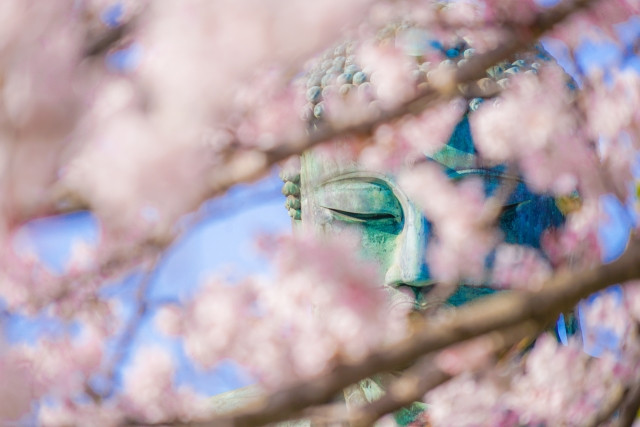
Temple Etiquette
Although a huge tourist attraction, ultimately this is still a temple. Apart from following basic temple etiquette, please do not go overboard when taking photos. Drones for aerial shots are prohibited as well as selfie sticks inside the statue. Photos taken should be for personal use only, not commercial.
Opening Hours
Temple Grounds
8:00~17:30 (Apr~Sept)
8:00~17:00 (Oct~Mar)
Temple Shop
8:30~16:45
Temple Office
8:00~16:30
Kamakura Buddha Interior (Temporarily Unavailable)
8:00~16:30
Entrance Fees
300 yen (Adults)
20 yen for Kamakura Buddha interior
※ Kotoku-in, "Map of the Temple Grounds" ※ Kamakura City, "Kotokuin Temple (Daibutsu)"
Summary
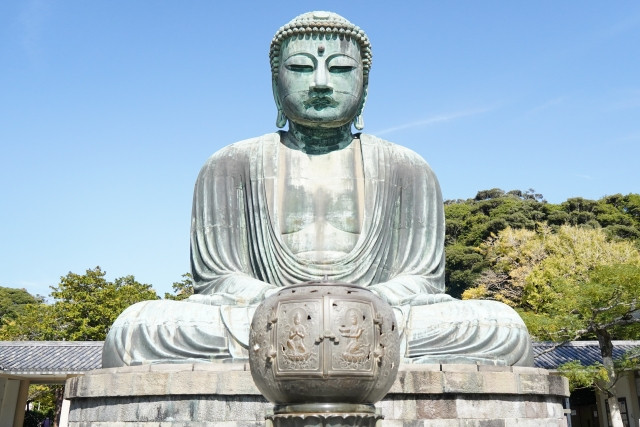
Kamakura Buddha, a relic of the Kamakura Period as well as a designated National Treasure of Japan, is a must-see. For those of the Buddhist faith, meeting the Great Buddha is too great an opportunity to pass up and to have prayers heard. For nature lovers, the beautiful temple grounds surrounded by nature is reason enough to visit.
For more things to do in Kanagawa, have a look at our article:
Get to Know Kanagawa Prefecture of Japan



















.jpg)












